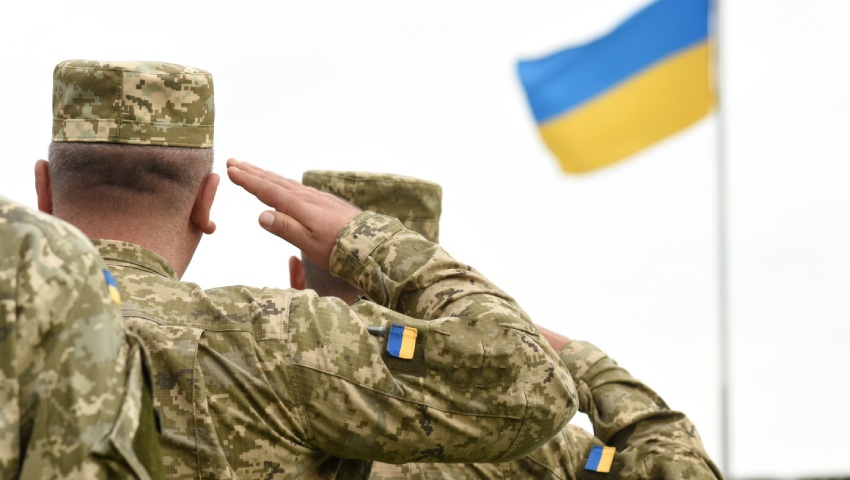Facing the threat of armed force, the Ukrainian government has adopted plans to undertake a citizen-led insurgency to deny Russian control. From militias to DIY hackers, how effective will Ukraine’s citizen soldiers be?
To continue reading the rest of this article, please log in.
Create free account to get unlimited news articles and more!
Irregular forces have long played a critical role in securing operational-strategic level victories in an often blurred battlespace.
From the British Iberian Peninsula campaign against Napoleon, to the Partisans in World War II and the insurgencies of Iraq and Afghanistan, irregular forces will continue to shape the battlefield and serve as a deterrent to military commanders seeking to tie down cities and strategic population hubs.
However the democratisation of military technology, whether conventional weaponry, drones or even a laptop for cyber warfare, has enabled irregular forces to integrate more rapidly into the order of battle and deny an adversary’s ability to seize and hold ground.
With recent hostilities flaring between Ukraine and Russia, the Ukrainian government has sought to integrate irregular warfare into the nation’s warfighting doctrine to bolster conventional warfighting forces.
Writing in War on the Rocks this week, chief executive of The Garfield Syndicate and retired US Army Colonel Brian Petit explained how irregular forces would be applied during the campaign.
“With its seven-year history of citizen-militias, quasi-official proxies, and official resistance formations, there is no question that invading forces will be met by gutsy irregulars,” Petit notes.
In fact, recent market research has shown that a substantial portion of Ukrainians would be willing to take up arms against an invading force, a terrible prospect for a Russian Army looking for a swift victory.
“A recent poll indicated that 24 percent of Ukrainians plan to engage in armed resistance if attacked. The Ukrainian armed forces are currently outnumbered and face potential invading forces from the north (Belarus), east (Russia) and south (Crimea, Black Sea, Transnistria),” he says.
Petit notes that the prospect of a protracted insurgency – as widespread as 24 per cent in a nation of over 40 million people – may be enough to dissuade the Kremlin from pushing its military beyond Luhansk and Donetsk, resulting in a loss of human capital that even the Russian military wouldn’t tolerate.
This isn’t been the first time where the threat of an insurgency has been a sufficient deterrent to an invading force.
Looking back to the Second World War, COL explains that Switzerland’s proposed guerrilla warfare throughout the Alps was deemed by the Nazi leadership too risky for a military campaign.
Just weeks ago, Petit explained how the Ukrainian government codified irregular warfare in the Small Wars Journal, including how the Ukrainian government built an entire supply chain to enable a protracted insurgency, allowing all members of society to help the war effort.
“On the higher end, Ukraine has signaled to its population that the time is now to choose the manner in which one can appropriately contribute to national resistance. Ukraine has mapped out paths for its citizens to aid the resistance, from the front lines to the soup lines,” Petit noted.
Petit notes that the doctrine for a citizen-centric model has been stressed by the government and military to cognitively prepare the population for their role in conflict, with Commanding General of the Ukrainian Joint Operations Forces General Oleksandr Pavlyuk stating via radio that the Ukrainian people would “start a partisan war” in the case of invasion. This would be a worrisome scenario for an invader, Gen Pavlyuk notes, as the country’s population already possess significant combat experience.
What would result, Petit explains, is a network of “snipers, saboteurs, hacktivists, urban guerrillas, and demolition experts” undertaking warfare on invading forces.
Such a protracted irregular campaign would also have unforeseen consequences for Russia.
According to Professor Spence Meredith writing in the Modern War Institute, poor Russian military technology will be bought to global attention in the event of both conventional and irregular combat – and undermine the competitive control the Kremlin exercises over allied rogue nations through military arms sales.
“Specifically, highlighting operational ineptitude and technical malfunctions in Ukraine can impact global arms sales and the Russian brand in the competitive market for private military companies (PMCs). Both costs would heighten intra-elite rivalries in Moscow as losses mount elsewhere,” Professor Meredith said.
“When those failures leave dead Russians in their wake, oft-repeated lies about training deaths in Ukraine, Syria, and the Central African Republic cannot easily convince the growing list of grieving Russian mothers.”
While Russia has this week committed forces to Luhansk and Donetsk, the insurgency deterrent may dissuade the Kremlin from yet further activity.
Get involved with the discussion and let us know your thoughts on Australia’s future role and position in the Indo-Pacific region and what you would like to see from Australia's political leaders in terms of partisan and bipartisan agenda setting in the comments section below, or get in touch with

 Login
Login







